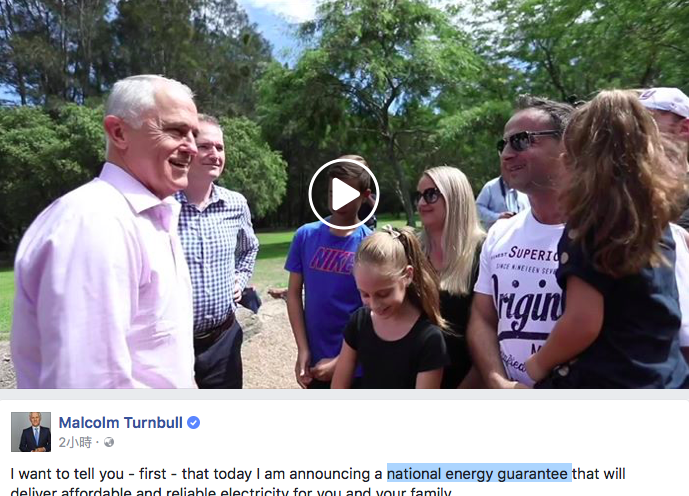The devil, so the idiom goes, is in the detail. Australia’s 2030 goal of reducing its emissions by 28% is ostensibly a laudable one. But Bloomberg New Energy Finance (BNEF) has calculated that hitting such a target requires the addition of a mere 1.5 GW of large-scale renewables capacity – a pretty skinny figure given the nation’s GW-scale annual growth in solar alone over the past year.
Prime Minister Malcolm Turnbull announced the National Energy Guarantee (NEG) system last month and faced instant criticism for the program’s lack of ambition, having ditched plans to extend and build on the current Renewable Energy Target (RET). In opposition, the Australian Labor Party has argued that a 50% RET by 2030 would be sufficient to “continue the current boom” for renewables deployment, BNEF has reported.
Should the government fail to raise its sights, private investment in large-scale solar and wind projects could suffer – and would be a missed opportunity, argued BNEF Australia head Kobad Bhavnagri. “The NEG could be an effective and innovative policy mechanism, but if the target is weak it will deliver little,” Bhavnagri told Bloomberg.
Australia’s coalition government met today to thrash out further details on the NEG, with energy ministers agreeing that more consensus is required following a lack of state-wide approval of the plan. While the federal government is advancing the NEG policy, the states would are required to implement it.
The immediate impact of this dragging of heels and current policy uncertainty beyond 2020 is to plunge the nation’s renewable energy sector into greater uncertainty, with the newly formed Energy Security Board now set to present its emissions regulations proposals next April.
According to BNEF, Labour’s 45% emissions reduction plan at RET would necessitate the installation of 17.3 GW of additional solar and wind power at utility scale out to 2030. Agreement, let alone deployment of such scale of ambition appears even less likely following Friday’s stalemate.
As things stand, renewables in Australia lack centralized direction, relying instead on state-level targets and the appetites – currently strong, but with no guarantees that they will stay that way – of developers to continue building at scale.
This content is protected by copyright and may not be reused. If you want to cooperate with us and would like to reuse some of our content, please contact: editors@pv-magazine.com.








By submitting this form you agree to pv magazine using your data for the purposes of publishing your comment.
Your personal data will only be disclosed or otherwise transmitted to third parties for the purposes of spam filtering or if this is necessary for technical maintenance of the website. Any other transfer to third parties will not take place unless this is justified on the basis of applicable data protection regulations or if pv magazine is legally obliged to do so.
You may revoke this consent at any time with effect for the future, in which case your personal data will be deleted immediately. Otherwise, your data will be deleted if pv magazine has processed your request or the purpose of data storage is fulfilled.
Further information on data privacy can be found in our Data Protection Policy.